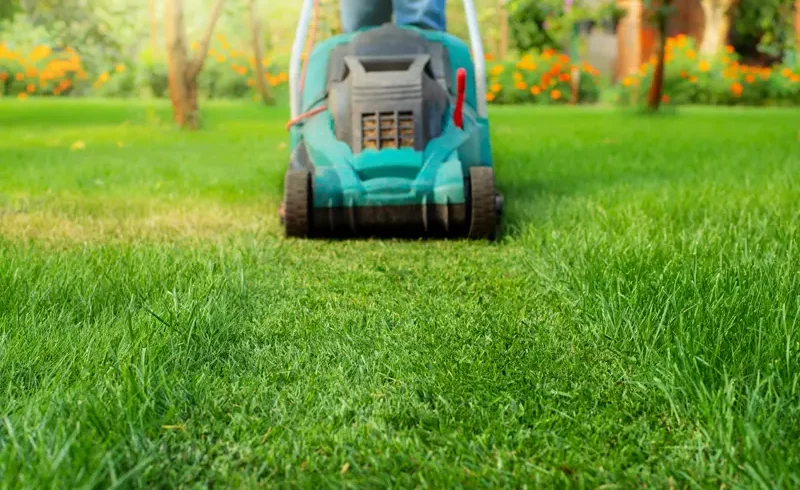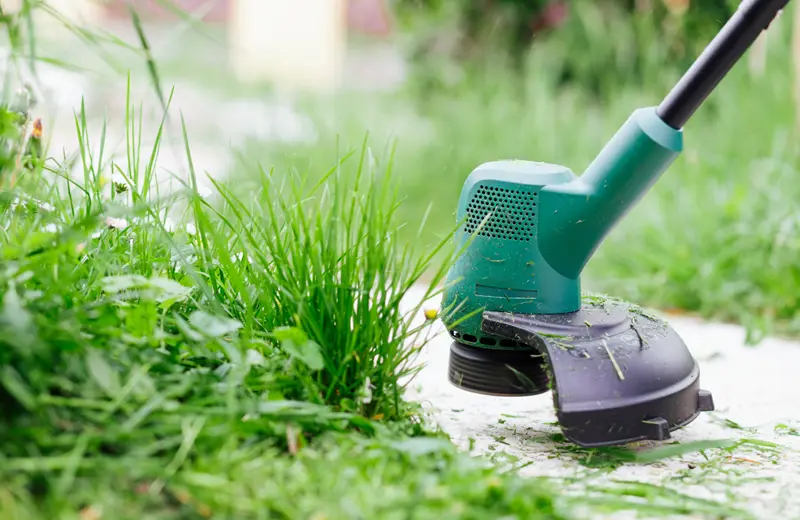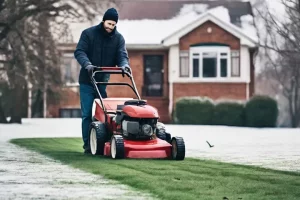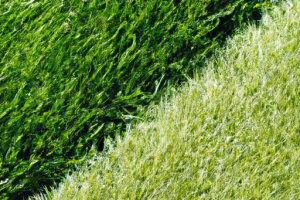
Introduction
A well-maintained lawn can be the crown jewel of a home. It provides a welcoming outdoor space, enhances curb appeal, and can even increase property value. However, achieving that lush, green perfection is more complex than it may seem. It requires a deep understanding of your lawn's unique needs, the implementation of effective care techniques, and a commitment to regular maintenance.
In this comprehensive guide, we will delve into the world of lawn care. We will explore everything from understanding the basics of your lawn to advanced care techniques, seasonal maintenance, dealing with common lawn problems, and even eco-friendly lawn care practices. Whether you're a novice gardener or a seasoned green thumb, this guide aims to equip you with the knowledge and skills to transform your lawn into a verdant paradise. So, let's embark on this journey to mastering the art of lawn care.
Understanding Your Lawn
Before you can effectively care for your lawn, it's essential to understand its basic components. This includes the type of grass, the nature of your soil, and the amount of sunlight and shade your lawn receives.
A. Types of Grass and How to Identify Them
There are numerous types of grass, each with its own set of care requirements. Some of the most common types include Kentucky Bluegrass, known for its rich color and high density; Bermuda Grass, which is heat-tolerant and proliferates; and Fescue, which is highly resistant to drought. Identifying your grass type can be done by examining the color, blade width, and growth pattern. Once you've identified your grass type, you can tailor your lawn care practices to its specific needs.
B. Understanding Your Soil Type
The soil in your lawn plays a crucial role in the health of your grass. Different soil types, such as sandy, clay, or loam, have different properties that can affect how well your grass grows. For example, sandy soil drains quickly but doesn't hold nutrients well, while clay soil retains water but can become easily compacted. You can determine your soil type by doing a simple soil test, examining its texture and color.
C. The Importance of Sunlight and Shade
The sunlight and shade your lawn receives can significantly impact its health. Most types of grass require at least six hours of daylight each day, but some varieties can tolerate shade. Observe your lawn throughout the day to understand its light exposure, and consider this when choosing grass types or planning lawn care practices.
By understanding these fundamental aspects of your lawn, you can create a more effective and personalized lawn care plan. Remember, every lawn is unique, and what works for one may not work for another. The key is observing, understanding, and adapting to your lawn's needs.
Advanced Lawn Care Techniques
Once you've mastered the basics, you can incorporate some advanced lawn care techniques. These methods, which include aeration, dethatching, and overseeding, can help to improve your lawn's health and appearance even further.
A. Aeration: What It Is and Why It's Important
Aeration involves perforating the soil with small holes, allowing air, water, and nutrients to penetrate the grass roots. This helps the roots grow deeply and produce a stronger, more vigorous lawn. The main reason for aerating is to alleviate soil compaction, which can prevent the proper circulation of air, water, and nutrients within the soil. Aeration can be done with a simple garden fork for small areas or a lawn aerator for more extensive lawns.
B. Dethatching: How to Identify Thatch and Remove It
Thatch is a layer of dead grass, roots, and debris accumulating on the soil's surface over time. While a small amount of thatch can be beneficial, too much can prevent water, nutrients, and air from reaching the ground, leading to a less healthy lawn. Dethatching involves removing this excess layer. This can be done using a dethatching rake or a specialized machine for larger areas.
C. Overseeding: When and How to Do It
Overseeding is planting new grass seeds directly into existing turf without tearing up the turf or the soil. It's easy to fill bare spots, improve turf density, establish improved grass varieties, and enhance your lawn's color. The best time to overseed is during the growing season when the grass seeds can germinate and establish themselves before the onset of winter.
Incorporating these advanced techniques into your lawn care routine can help ensure your lawn stays healthy, lush, and beautiful. Remember, every lawn is unique, and what works for one may not work for another. Constantly monitor your lawn's health and adjust your care techniques as needed.
Lawn Care Through the Seasons
Lawn care is a year-round commitment, and each season brings its own set of tasks. Understanding what your lawn needs during each season can help you keep it healthy and vibrant all year long.
A. Spring: What Tasks to Prioritize
Spring is a time of growth and renewal, making it an essential season for lawn care. Tasks to prioritize in the spring include cleaning up any debris left over from winter, reseeding bare patches, applying a pre-emergent herbicide to prevent weeds, and starting your regular mowing routine.
B. Summer: How to Maintain Your Lawn in the Heat
Summer can be tough on lawns due to high temperatures and potential drought. During this season, it's essential to water your lawn deeply and infrequently, mow at a higher height to shade the soil and retain moisture, and apply a slow-release fertilizer to feed it throughout the summer.
C. Fall: Preparing Your Lawn for Winter
Fall is the time to prepare your lawn for the upcoming winter. This includes aerating your lawn to relieve soil compaction, over-seeding to fill in thin areas, and applying a winterizer fertilizer to strengthen your lawn's roots and increase nutrient storage for spring.
D. Winter: How to Protect Your Lawn During the Cold Months
During winter, lawn care tasks are minimal but still important. It's crucial to keep your lawn clear of leaves and other debris to prevent disease, avoid walking on it when it's frosty to prevent damage and monitor for any signs of winter diseases or pests.
Adjusting your lawn care practices to suit the changing seasons ensures your lawn stays healthy and beautiful throughout the year. Remember, your lawn's needs may vary based on your specific climate and grass type, so always observe and adjust as necessary.
Dealing with Common Lawn Problems
Even with the best care, lawns can sometimes encounter problems. These can range from weeds and pests to diseases and nutrient deficiencies. Understanding how to identify and deal with these common lawn problems can help keep your lawn healthy and vibrant.
A. Weeds: Identification and Removal
Weeds are a common problem in many lawns. They compete with grass for nutrients, water, and sunlight and can quickly take over if not controlled. Common types of lawn weeds include dandelions, crabgrass, and clover. Weeds can be removed manually or with the use of herbicides. Regular mowing, proper watering, and maintaining a healthy lawn can also help prevent weed growth.
B. Lawn Diseases: How to Spot Them and What to Do
Lawn diseases can cause various symptoms, including discolored patches, spots on grass blades, and thinning areas. Common lawn diseases include brown patches, dollar spots, and rust. If you notice signs of disease, it's essential to identify the cause and treat it appropriately. This may involve adjusting your lawn care practices or applying a fungicide.
C. Pests: Common Lawn Pests and How to Deal with Them
Pests can cause significant damage to lawns. Common lawn pests include grubs, sod webworms, and chinch bugs. Signs of a pest problem can consist of brown patches, wilting grass despite watering and visible insects. Pest problems can often be managed with pesticides, but it's important to identify the specific pest and use a product designed to control it.
Identifying and dealing with common lawn problems can help ensure your lawn stays healthy and beautiful. Prevention is often the best cure, so maintaining a healthy lawn is the best defense against these problems.
Eco-Friendly Lawn Care
In today's world, it's more important than ever to consider the environmental impact of our actions, including how we care for our lawns. Eco-friendly lawn care practices can help reduce your ecological footprint while maintaining a healthy and beautiful lawn.
A. Organic Lawn Care Tips
Organic lawn care involves using natural methods and products to care for your lawn. This can include using organic fertilizers from plant or animal waste, composting to improve soil health, and natural ways to control weeds and pests. Organic lawn care can help improve soil health, reduce pollution, and create a safer environment for pets and children.
B. Water Conservation Techniques
Water conservation is a crucial aspect of eco-friendly lawn care. This can involve watering your lawn deeply but infrequently to encourage deep root growth, watering early in the morning to reduce evaporation, and using a rain barrel to collect rainwater for watering your lawn. Choosing drought-tolerant grass varieties can also help reduce water usage.
C. Natural Alternatives to Chemical Pesticides and Fertilizers
There are many natural alternatives to chemical pesticides and fertilizers that can effectively maintain a healthy lawn. These include homemade weed killers made from vinegar or soap, natural pest deterrents like nematodes or diatomaceous earth, and homemade fertilizers made from compost or manure.
By adopting eco-friendly lawn care practices, you can maintain a beautiful lawn while also protecting the environment. Remember, every small change can make a difference, so start incorporating these practices into your lawn care routine today.
Conclusion
Lawn care is both a science and an art. It requires a deep understanding of your lawn's unique needs, the implementation of effective care techniques, and a commitment to regular maintenance. From understanding the basics of your lawn to advanced care techniques, seasonal maintenance, dealing with common lawn problems, and even eco-friendly lawn care practices, we've covered a lot of ground in this guide.
Remember, every lawn is unique, and what works for one may not work for another. The key is observing, understanding, and adapting to your lawn's needs. With patience, consistency, and the proper knowledge, you can transform your lawn into a lush, green oasis that enhances your home's curb appeal and provides a welcoming space for relaxation and enjoyment.
Whether you're a novice gardener or a seasoned green thumb, we hope this guide has provided valuable insights and practical tips to help you on your lawn care journey. Happy gardening!

James Smith is our editor. He is an accomplished and versatile news writer with over a decade of experience covering a wide range of topics, including politics, business, and real estate. Throughout his career, James has been dedicated to uncovering the truth and presenting unbiased, factual reporting to his audience.





